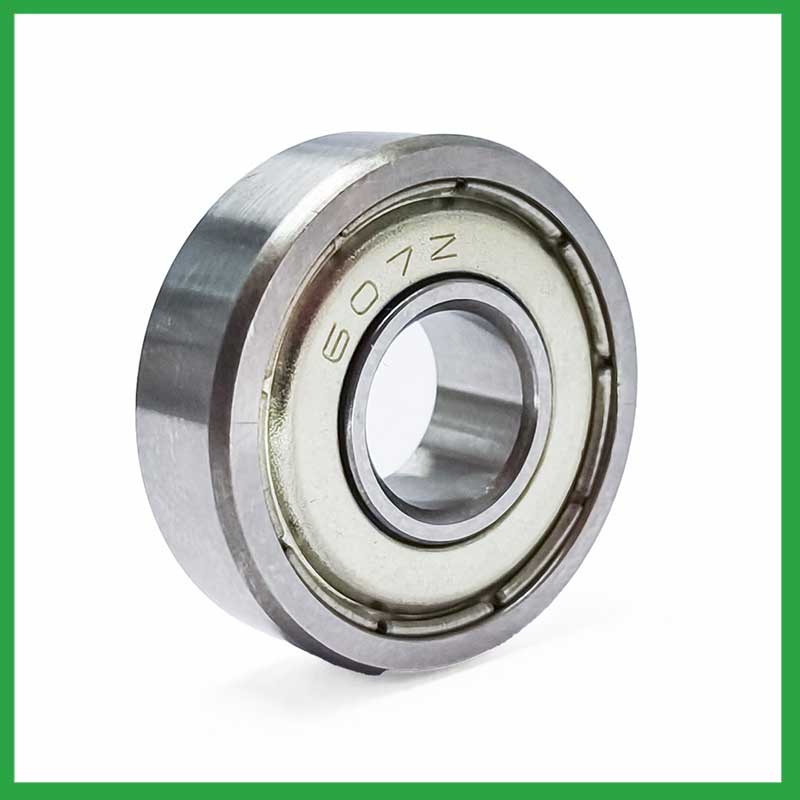2024-07-29
In mechanical systems, bearings are essential components that facilitate smooth rotation and reduce friction between moving parts. Among the various types of bearings, tapered roller bearings and cylindrical roller bearings are commonly used in a wide range of applications, from automotive to industrial machinery. Nide International, a leading supplier of high-quality bearings, offers insights into the key differences and applications of these two bearing types. This article compares tapered roller bearings and cylindrical roller bearings, highlighting their unique features and advantages.

Tapered roller bearings consist of an inner ring (cone), an outer ring (cup), tapered rollers, and a cage that guides the rollers. The tapered shape of the rollers and raceways allows these bearings to support both radial and axial loads. The angles of the taper determine the degree of thrust that the bearing can accommodate. Tapered roller bearings are typically used in pairs, mounted opposite each other, to handle axial forces in both directions.
High Load Capacity: Tapered roller bearings are designed to handle large radial and axial loads simultaneously. This makes them ideal for applications where high loads are expected, such as in automotive wheel hubs and heavy machinery.
Durability and Longevity: The design of tapered roller bearings ensures even load distribution, reducing wear and extending the bearing's service life. They are well-suited for applications with high load and shock resistance requirements.
Versatility: Tapered roller bearings can be adjusted to achieve the desired preload, providing flexibility in their applications. This adjustability helps maintain precision and stability in the system.
Cylindrical roller bearings consist of an inner ring, an outer ring, cylindrical rollers, and a cage. Unlike tapered roller bearings, the rollers in cylindrical roller bearings are straight, which allows for a higher load-carrying capacity and lower friction compared to ball bearings. These bearings are designed to support heavy radial loads but have limited capacity for axial loads.
High Radial Load Capacity: The straight roller design allows cylindrical roller bearings to carry heavy radial loads efficiently. This feature makes them suitable for high-speed applications where radial loads are predominant.
Low Friction and High Speed: Cylindrical roller bearings have lower friction compared to other types of bearings, allowing for higher speed operation. This characteristic is beneficial in applications such as electric motors and gearboxes.
Versatile Configurations: Cylindrical roller bearings are available in various configurations, such as single-row, double-row, and multi-row designs. These configurations provide options for different load and speed requirements.

Tapered roller bearings are better suited for applications where both radial and axial loads are present, such as in automotive and truck wheel hubs. Their design allows them to handle thrust loads in both directions, making them ideal for applications with high axial load requirements.
Cylindrical roller bearings, on the other hand, excel in applications with high radial loads and limited axial loads. They are commonly used in electric motors, gearboxes, and pumps, where low friction and high-speed capabilities are essential.
Cylindrical roller bearings generally offer higher speed capabilities due to their low friction design. This makes them suitable for high-speed applications, such as turbines and compressors.
Tapered roller bearings, while capable of handling high speeds, may generate more friction due to the angled contact surfaces. However, they provide superior load support and durability, which is crucial in heavy-duty applications.
Cylindrical roller bearings are typically more compact and have a simpler design, making them easier to install and maintain in confined spaces. They are often preferred in applications where space is a constraint.
Tapered roller bearings, due to their construction, may require more space and careful alignment. However, their ability to handle combined loads makes them indispensable in applications where both radial and axial loads are significant.

Tapered roller bearings and cylindrical roller bearings each offer distinct advantages depending on the application's specific requirements. Tapered roller bearings are ideal for applications involving combined radial and axial loads, providing durability and load-bearing capacity. Cylindrical roller bearings, with their low friction and high-speed capabilities, are suited for applications requiring efficient radial load handling. Nide International offers a wide range of both bearing types, ensuring that customers can find the right solution for their needs, whether it's for automotive, industrial, or high-speed applications.
Tags: Wholesale 604ZZ Miniature Deep Groove Ball Bearing High Precision Mini Bearings